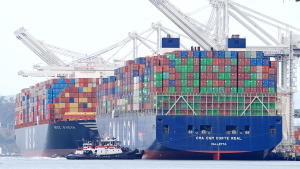Since we’re all cautiously emerging from sanctuary, the former title of my articles, written while I was housebound – Notes from the Trenches, – no longer applies. Therefore, I’ve chosen a new heading, as you will observe above. It still captures a certain wariness on my part.
U.S. & Canadian Economic Differences
There are so many similarities between the U.S. and Canadian economies, it’s easy to imagine their responses to the coronavirus crisis six months, or a year, down the road will be quite similar. But there are also numerous ways in which the two countries vary (bullet points below), and those differences may well play key roles in how each performs post-pandemic.
- The size of the U.S. population is nine times greater than Canada’s.
- Prior to the pandemic, though, Canada’s population was growing much faster than America’s, +1.5% annually versus +0.5%.
- Total housing starts in Canada have been close to their annual equilibrium level of 200,000 units for the past decade (where ‘equilibrium’ is the amount justified by population growth and family formations). Total U.S. housing starts, since the 2008-09 recession have always been below (and often far below) their annual equilibrium level of 1.6 million units. There is much greater pent-up demand for housing in the U.S. than in Canada.
- Mortgage interest payments on up to $750,000 in principal on residential properties are income tax deductible in the U.S. There’s no such ‘forgiveness’ for Canadian taxpayers.
- As a percentage of GDP, Canada’s dependence on foreign trade is at least twice as great as America’s.
- But with respect to foreign trade, the U.S. is considerably more affected by its deficit position with China (i.e., sometimes more than half of a very large monthly all-nations trade shortfall) than is Canada.
- Canada is more reliant on resource sector export sales than is the U.S.
- Canada’s important oil sector, dominated by extraction in Alberta, receives a ‘Western Canada Select’ (WCI) price that can be at a hefty discount to the West Texas Intermediate (WTI) price that applies for American producers.
- The economies of both countries are increasingly being driven by the high-tech sector. Early on, Canada was lagging in high-tech jobs, but has been catching up lately (and COVID-19 isn’t likely to change that dynamic). The problem for Canada, though, is that the head offices of high-tech firms are predominantly in the U.S.
- The largest commercial properties (shopping centers and office towers) in the U.S. are owned by private companies. In Canada, the most prestigious landlords are mainly large government-employee pension funds.
- Canada has universal health care. The U.S. has placed one foot in that room but remains unsure whether to advance further or to retreat out the doorway.
- The military plays a vastly greater role in local economies and construction activity in the U.S. than in Canada.
- The U.S. dollar is the world’s reserve currency. This provides the U.S. with a huge advantage versus all other nations. Demand for the U.S. dollar (or, more accurately, for U.S. government debt instruments), as a safe haven in times of economic turmoil, allows the Federal Reserve to stick with lower interest rates than might otherwise be needed.
- In 2007, the Canadian dollar climbed to parity with the U.S. dollar, then soared on past for a brief while, before backsliding again. At the time, I talked a bit about how measures should perhaps be adopted to maintain equivalency. Everyone said I was nuts; that allowing the Canadian dollar to fall would provide a cushion for homegrown manufacturing. But there’s an international wealth effect. Here’s a question I have for you. When a Canadian acquires $1 million CAD in assets and his or her American friend or relative accumulates $1 million USD, who’s really richer? Need a hint? Due to the 70-to-75-cent range for the loonie relative to the greenback, it ain’t the Canadian.
Read the previous article here: The Economy under COVID-19: Notes from my New Hiding Place – Within the Herd (June 1, 2020).











Recent Comments
comments for this post are closed